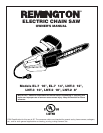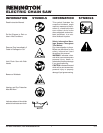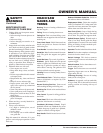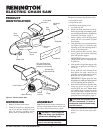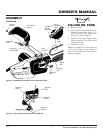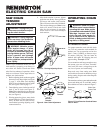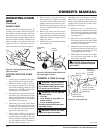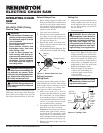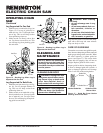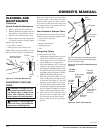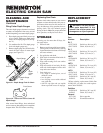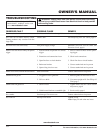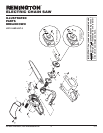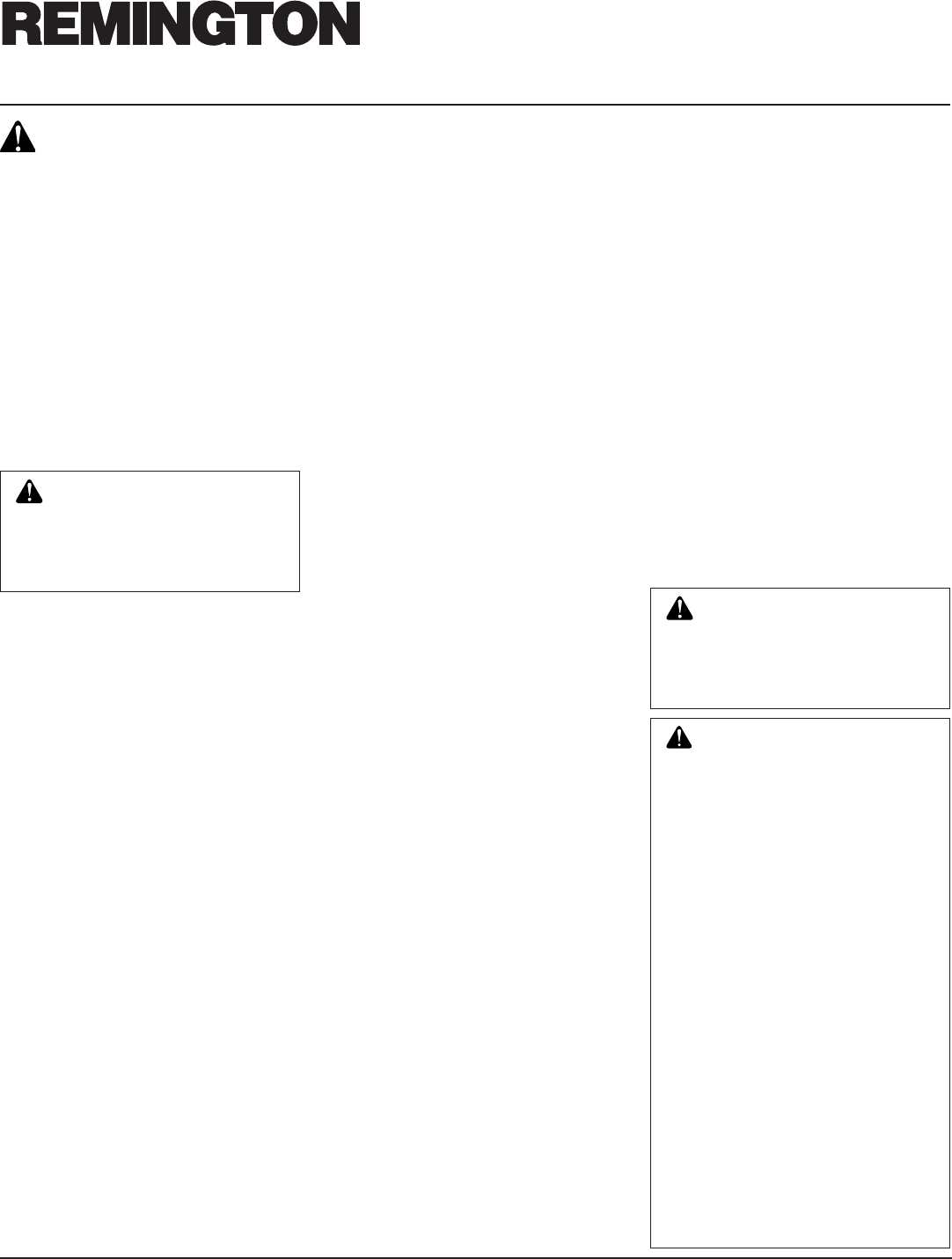
4
105020
ELECTRIC CHAIN SAW
®
For more information, visit www.desatech.com
•Never try cutting through two logs at
same time. Only cut one log at a time.
•Watch for shifting of log or other forces
that may pinch chain.
• Use extreme caution when reentering a
previous cut.
• Do not twist saw when removing guide
bar from undercut.
• Use wedges made of plastic, wood, or
light alloy (never steel or iron) to hold
cut open.
CHAIN SAW OPERATION
1. Stay alert. Use common sense while op-
erating chain saw.
2. Keep work area clean. Cluttered areas
invite injuries.
3. Be aware of extension cord while op-
erating chain saw. Be careful not to trip
over cord.
4. Keep children, animals, and bystand-
ers away from chain saw and extension
cord. Only chain saw user should be in
work area.
5. Do not cut down a tree unless you are
trained or have expert help.
6. If two or more persons perform buck-
ing and felling operations at the same
time, provide plenty of distance between
operations. Provide distance of at least
twice the height of tree being felled.
7. Secure wood you are cutting by using
clamps or chocks.
8. Grip chain saw firmly with both hands.
Never operate chain saw with one hand.
Never use hand guard as handle.
9. Keep finger off trigger until ready to
make cut.
10. Before starting chain saw, make sure
chain is not touching anything.
11. Avoid body contact with grounded ob-
jects such as pipes, wire fences, and
metal posts.
12. Keep all parts of body away from chain
when saw is running.
13. Do not force chain saw while cutting.
Apply light pressure.
14. Cut small brush and saplings with ex-
treme care. Slender material may catch
in chain and be whipped toward you.
This could also pull you off balance.
15. When cutting limb or tree trunk that is
under tension, use extreme caution. Be
alert for wood springing back. When
wood tension is released, limb could
spring back and strike operator caus-
ing severe injury or death.
16. Do not activate the chain brake to stop
saw. Always release trigger to stop saw.
17. Carry chain saw from one place to an-
other
• with chain saw unplugged
•by holding front handle (never use
front hand guard as handle)
• with finger off trigger
• with guide bar and chain to rear
• with scabbard in place
SAFETY
WARNINGS
Continued
Saw Maintenance and Kickback
Safety
Follow maintenance instructions in this manual.
Proper cleaning of saw and chain and guide
bar maintenance can reduce chances of kick-
back. Inspect and maintain saw after each use.
This will increase the service life of your saw.
Note:
Even with proper sharpening, risk of
kickback can increase with each sharpening.
PUSHBACK AND PULL-IN
Cause Of Pushback and Pull-In
Pushback may occur while cutting with top
of guide bar. Pushback will force saw back
towards you. Pull-in may occur while cut-
ting with bottom of guide bar. Pull-in will
force saw in towards wood you are cutting.
These hazards can occur if chain is pinched,
caught, or contacts a non-wood object.
The following steps will reduce the risk of
pushback or pull-in:
• Use both hands to grip saw while saw is
running. Use firm grip. Thumbs and
fingers must wrap around saw handles.
• Do not overreach or cut above shoulder
height.
•Keep solid footing and balance.
• Stand slightly to left side of saw. This
keeps your body from being in direct line
with chain.
•Have saw running at full speed before
starting a cut.
•When cutting, make sure spike of saw is
against wood (pull-in only). See Prod-
uct Identification, page 6, to locate spike.
WARNING: Avoid pushback
and pull-in. These hazards can
cause you to lose control of chain
saw. Pushback or pull-in can
cause severe injury.
WARNING: Some dust cre-
ated by power sanding, sawing,
grinding, drilling, and other con-
struction activities contains
chemicals known (to the state of
California) to cause cancer, birth
defects, or other reproductive
harm. Some examples of these
chemicals are:
• lead from lead-based paints
• crystalline silica from bricks
and cement and other masonry
products
• arsenic and chromium from
chemically-treated lumber
Your risk from these exposures
varies, depending on how often
you do this type of work. To re-
duce your exposure to these
chemicals: work in a well venti-
lated area, and work with ap-
proved safety equipment, such
as those dust masks that are spe-
cially designed to filter out mi-
croscopic particles.
WARNING: This product con-
tains chemicals known to the
State of California to cause can-
cer or birth defects, or other re-
productive harm.



